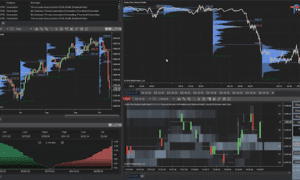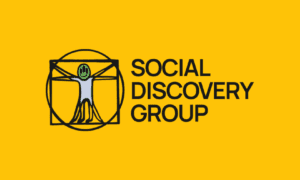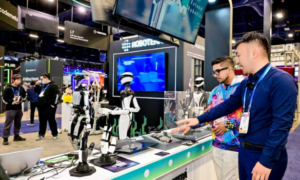Gloria Are is Technical Program Manager at a technology-powered pharmacy fulfillment company that provides an integrated platform of capabilities to support centralized pharmacy fulfillment and community pharmacy fulfillment solutions. In this role, Ms. Are deploys her expertise in software engineering project management (PM), applying SCRUM strategies and advanced PM technologies to plan and execute data center applications and third-party API pharmaceutical projects.
Ms. Are has specialized for more than 15 years in the planning, design, creation, testing, and implementation of cutting-edge, fit-for-purpose cross-disciplinary digital products and solutions. While ensuring that software engineering projects are delivered on time and on budget, she is responsible for communicating with customers and sales teams to understand and document requirements for their pharmacy central fulfillment needs, collaborating across various teams to integrate technical information, notional designs, requirements, pricing, testing, and customer feedback. As the PM technology leader, Ms. Are supervises cross-functional teams, and develops and maintains project plans, project schedules, release plans, dashboards, milestones, and business requirement documents. She notably managed the implementation of a Key Distribution System on the software and PHI/PII data to ensure proper data protection and privacy principles enacted.
Among her professional positions, Ms. Are has also worked as a Project Manager at a scientific nonprofit organization, supporting the professional association’s program by establishing, managing, monitoring, and reporting on technology initiatives and fiscal year goals. She additionally has assessed risk and established an effective communication model for various organizational stakeholders.
Ms. Are received a bachelor’s degree in International/Global Studies with a focus on International Business and International Relations from Indiana University, and continued her graduate studies there, earning a Master of Arts degree in Political Science and Policy Analysis. Pursuing professional education in technology and Project Management, she earned the prestigious Project Management Professional (PMP) Certification and SCRUM Fundamentals Certification, followed by additional certifications in Project Management, Public Management, Nonprofit Management, and Mediation and Conflict Resolution.

Gloria Are
Ellen Warren: Your role involves managing third-party API pharmaceutical projects. How do you integrate third-party APIs into your system, especially when dealing with sensitive pharmaceutical data?
Gloria Are: The SWE (Software Engineering) teams prioritize effective communication with the third-party partners before any software development begins. There needs to be an alignment between us and the third-party on the right API solution, the specific types of data that will be shared, and maintenance protocols, before development starts. In addition, we and our partners abide by HIPPAA regulations and guidelines which helps us protect sensitive pharmaceutical data.
EW: What strategies do you use to gather and document customer requirements, particularly in a specialized industry like pharmacy fulfillment? How do you ensure alignment between customer needs and technical deliverables?
GA: The cross-functional relationship between my engineering teams and the product management teams are vital in ensuring we gather accurate customer requirements and determine needed customer deliverables. Documenting these requirements is a key strategy here; we have system requirements from the customer that are the source material for the engineering design strategies documented, then we document the layout of the customers’ hardware and sites that receive our products, as well as suggested maintenance guidelines post-software install.
EW: Throughout your Project Management career, you have applied both SCRUM and Agile methodologies in your roles. How do you determine when to apply SCRUM versus other project management approaches?
GA: There are a couple of considerations I make when choosing SCRUM for a project vs other methodologies. When I receive a project, I look at the team structure and what level of engagement is needed for stakeholders. Teams that are small but heavily cross-functional benefit well from SCRUM because they can focus on a common goal while being flexible enough to adapt to changes. Also, projects that need regular stakeholder engagement benefit from SCRUM because there are opportunities to continuously align with the customers and other stakeholders, to make sure the customer requirements are met.
EW: Your role requires you to build strategies and timelines for multiple projects simultaneously. How do you manage competing priorities and maintain project alignment with your company’s overall mission and goals?
GA: I always make sure that I prioritize revenue-generating and high-impact projects by making sure there is an effective communication plan with stakeholders, and that resources are being prioritized to complete tasks within that project. Then I look at all the projects I have that make up my program in a particular timeline period, and create a flexible timeline with periods for review, so I can continuously reassess when the appropriate periods are to delegate tasks, realign with resources, and reemphasize project goals that lead to expected customer outcomes. This approach lets me adjust resources across high-impact projects vs other projects in a given program timeline.
EW: You’ve led the implementation of various software such as Jira, Asana, and Monday.com. What strategies have you developed to select and integrate project management tools into your team’s workflow, and how do you ensure that all team members are aligned and effectively using these tools to keep your software engineering projects on schedule and on budget, especially when coordinating with multiple teams and external stakeholders?
GA: When integrating project management tools to a specific project in a company, I tend to focus on aligning the right tool with the specific project needs and the established workflow of the team. If there isn’t an established workflow, I pick a tool that is easy to use, can integrate to multiple platforms (not limited to Microsoft, Google and various dev stack programs), and can have various visuals and reports to communicate progress in the project to various stakeholders. JIRA, Asana and Monday.com all offer these capabilities at varying levels; due to their ease and adaptability the software engineering teams got on board with using them quickly. It also offered a level of ownership to the teams because they understood that their inputs in the form of tasks, designs, hours worked vs hours completed, and other metrics rolled up to feasible budgets and schedules that cross-functional teams and stakeholders were able to digest seamlessly. It was an opportunity for the team to describe what they did and their progress on a project without the added complexity of numerous meetings and interruptions.
EW: As a technical program manager, you supervise cross-functional teams. How do you foster collaboration and ensure that each team member contributes effectively, especially when handling complex technical information and tight deadlines?
GA: To foster collaboration and ensure effective contributions from each team member, I establish clear communication channels, define roles and responsibilities, and leverage collaborative tools like Teams, work sessions, breakout sessions, etc. Additionally, I encourage feedback within my team and from my team to myself and stakeholders, provide necessary support and resources once a need is called out, use our tools to make sure we are managing the team’s time time effectively, and recognize team members’ contributions to maintain motivation and morale through recommendations for awards, promotions, and leadership opportunities.
EW: Your responsibilities include reporting. How do you ensure transparency in reporting, especially when managing complex, multi-faceted projects with multiple stakeholders?
GA: In my opinion, the success of a multi-faceted project can be measured by the quality of reporting processes throughout the project. To ensure transparency, I establish clear communication channels via meetings, emails, metrics in project management tools, etc., provide detailed and accurate reports, and use visual aids like dashboards and charts to present data effectively. Additionally, I encourage feedback from my team at various levels, with and without management, which in turn fosters an environment of openness and trust.
EW: You’ve worked across both nonprofit and for-profit sectors. How do you adjust your project management strategies to suit the unique needs and culture of each type of organization?
GA: It is a balancing act between the available resources against the mission and goals of the projects in each sector that determines the project management strategy and approach. In the nonprofit sector, the goal is usually needing to maximize the most impact with limited resources. For example, when I managed a community outreach program, I prioritized stakeholder engagement by involving community members and volunteers in the planning and execution phases. This helps ensure that the program aligns with the community’s needs and leverages local support. Additionally, I emphasize transparency by regularly updating donors and stakeholders on the program’s progress and outcomes, fostering trust and continued support.
In the for-profit sector, I prioritize efficiency and profitability. For example, when leading a SWE project for a customer, I implement agile methodologies to quickly adapt to market changes and customer feedback. This involves conducting regular sprint reviews and iterations to refine the product based on real-time data. I also focus on optimizing processes to reduce costs and improve time-to-market, ensuring that the project delivers a competitive advantage and aligns with the company’s strategic goals.
EW: You have extensive training and certifications in project management. Given the pace of new technologies coming to market, how do you stay current with new methodologies, tools, and technologies in the field of project management and software engineering?
GA: I make sure I spend about 10-15% of my free time in a week staying current on new methodologies, tools, and technologies that are cutting-edge in project management. I am always looking for tools and processes that are iterative and can be broadly applied to various projects and programs. The best avenues I have found for advanced knowledge development are a combination of attending industry conferences and lectures, as well as collaborating with my peers in similar industries and sharing ideas. The Project Management Institute (PMI) organization is a valuable tool for me to get both avenues at my fingertips, as a membership offers many opportunities to attend lectures and conferences, and opens up the network of project managers and program managers to each other.
EW: What skills do you believe are essential for success in technical project management? What guidance would you give to young professionals seeking a career in this field?
GA: I will say the most critical skills for success in technical project management are willingness to learn technical subject matter, effective communication, problem-solving, time management, and adaptability. For young professionals interested in a career in technical project management, it is important to embrace continuous learning opportunities, seek out opportunities to practice communication skills for various audience types, connect with mentors in the field, and think like a project manager in your day-to-day life. Early in my career, I had a mentor that told me “best practice is adoption,” which I understood to mean that I needed to leverage opportunities in my day-to-day life outside of work to practice my project management skills until it was second nature to me. I credit this as the main key to my success in my career so far.
































